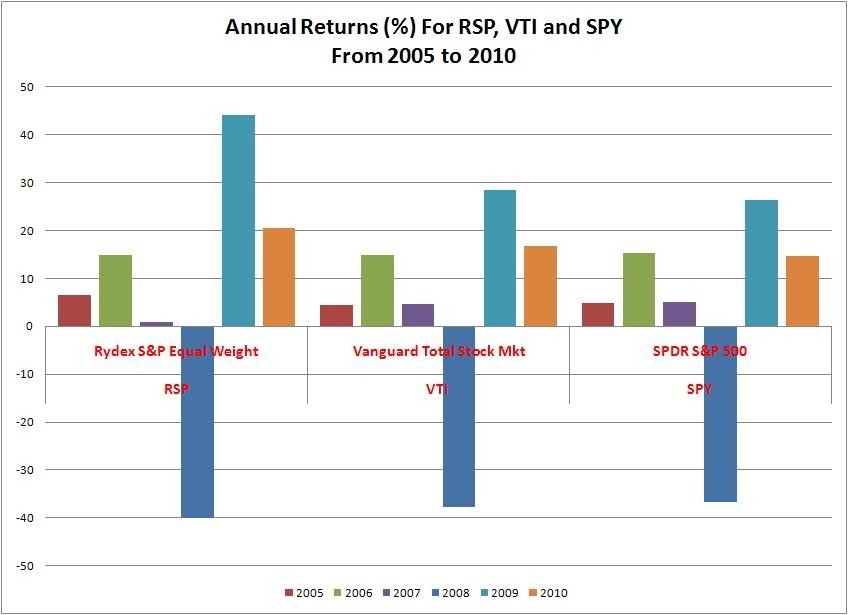Rydex to Launch ETF Based on EqualWeighted S&P 500
Post on: 21 Июль, 2015 No Comment

Rydex, the fund family best known for its lineup of sector and leveraged index funds catering to active traders, said it will soon launch an exchange-traded fund that tracks an equal-weighted S&P 500 index. Earlier this year, Standard & Poor’s granted a license to Rydex for funds tracking the equal-weighted S&P 500 index that the firms jointly developed.
The Rydex S&P Equal Weight ETF, which will have an expense ratio of 0.40%, is scheduled to begin trading on April 30.
The new ETF differs from existing market capitalization-weighted S&P 500 index funds in its approach. The Rydex ETF will hold equal portions of all S&P 500 companies, with the fund rebalancing on a quarterly basis (for more on index weighting methodologies, see this article ). Essentially, the equal weighting means that the Rydex fund will have more of a mid-cap bias than regular S&P 500 index funds.
Although this will be the first equal-weighted index ETF, the Morgan Stanley Value-Added Market Equity fund (VADBX) uses a similar equal-weighted S&P 500 strategy. The fund, which was introduced in the late 1980s, has a very high expense ratio at 1.60%. The fund’s newer A shares are less expensive at 0.85%, but both share classes carry front-end loads in the neighborhood of 5%, according to Morningstar’s fund database.
The table below shows how VADBX performed against the S&P 500 from 1993 to 2002.
VADBX vs. S&P 500 (1993-2002)
Source: Morningstar data [/:Author:]
Throughout most of the mid- and late-1990s, the equal-weighted approach lagged the S&P 500 because large-cap stocks outperformed. However, starting in 2000 mid-cap stocks outperformed so the edge went to equal weighting.
Although the equal-weighted S&P 500 outperformed the past three years, it has done so with more volatility and turnover.
Since the new Rydex ETF will rebalance quarterly to maintain the equal weighting, it will sell winning stocks and buy losing stocks. Therefore, relative to the S&P 500 it should have higher turnover and lower tax efficiency. However, the ETF format, which tends to reduce capital gains distributions, may insulate the fund somewhat from a tax efficiency standpoint.
It remains to be seen whether retail investors will embrace the new equal-weighted ETF. The recent closing of four U.S. Treasury ETFs has reinforced the fact that margins are slim in this competitive industry, despite the general growth of assets in index-based ETFs. More weeding out may soon follow.
The main argument against the Rydex equal-weighted ETF is that retail investors already have cheap tools to get exposure to small- and mid-cap stocks.
For example, there are ETFs tied to S&P and Russell mid- and small-cap indexes that have expense ratios as low as 0.20%. Investors can purchase S&P 500 ETF shares for as little as 0.09%, and approximate the size factor of an equal-weighted S&P 500 with a mix of large- and mid-cap funds (with periodic rebalancing as necessary).
As always investors must factor in ETF brokerage commissions when considering total expenses. For comparison’s sake, Vanguard’s mid-cap and small-cap index funds have expense ratios of 0.25% and 0.27%, respectively.














